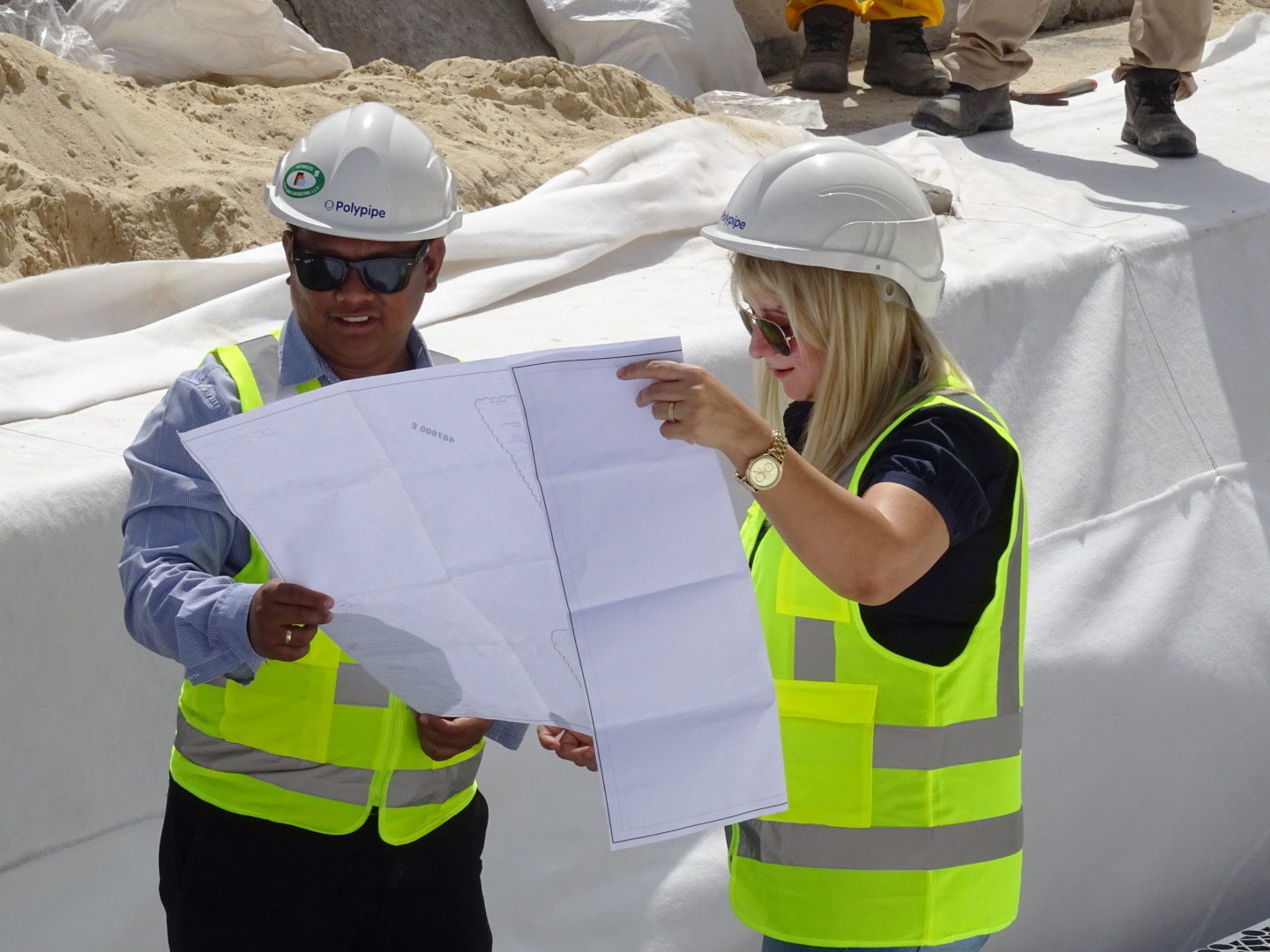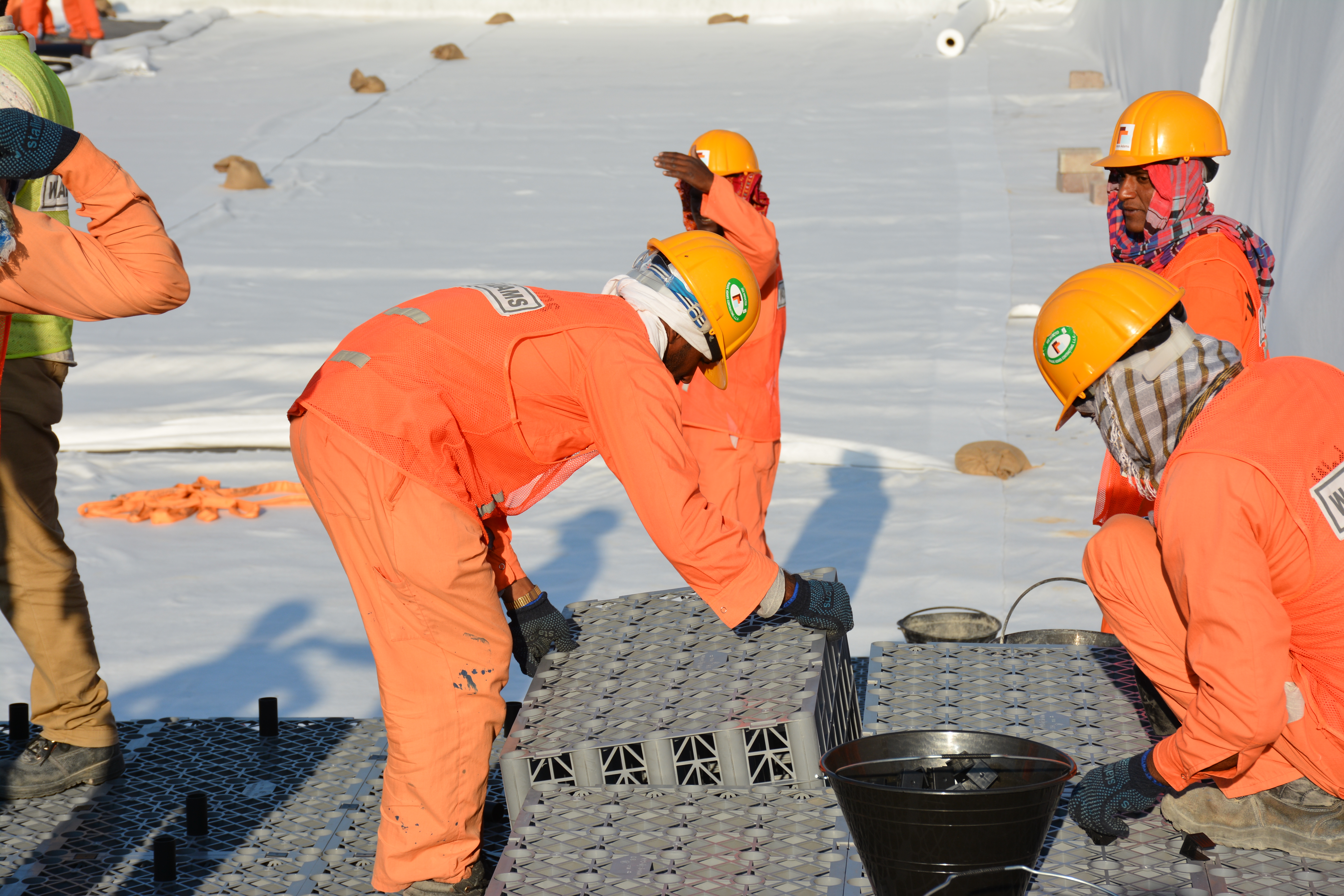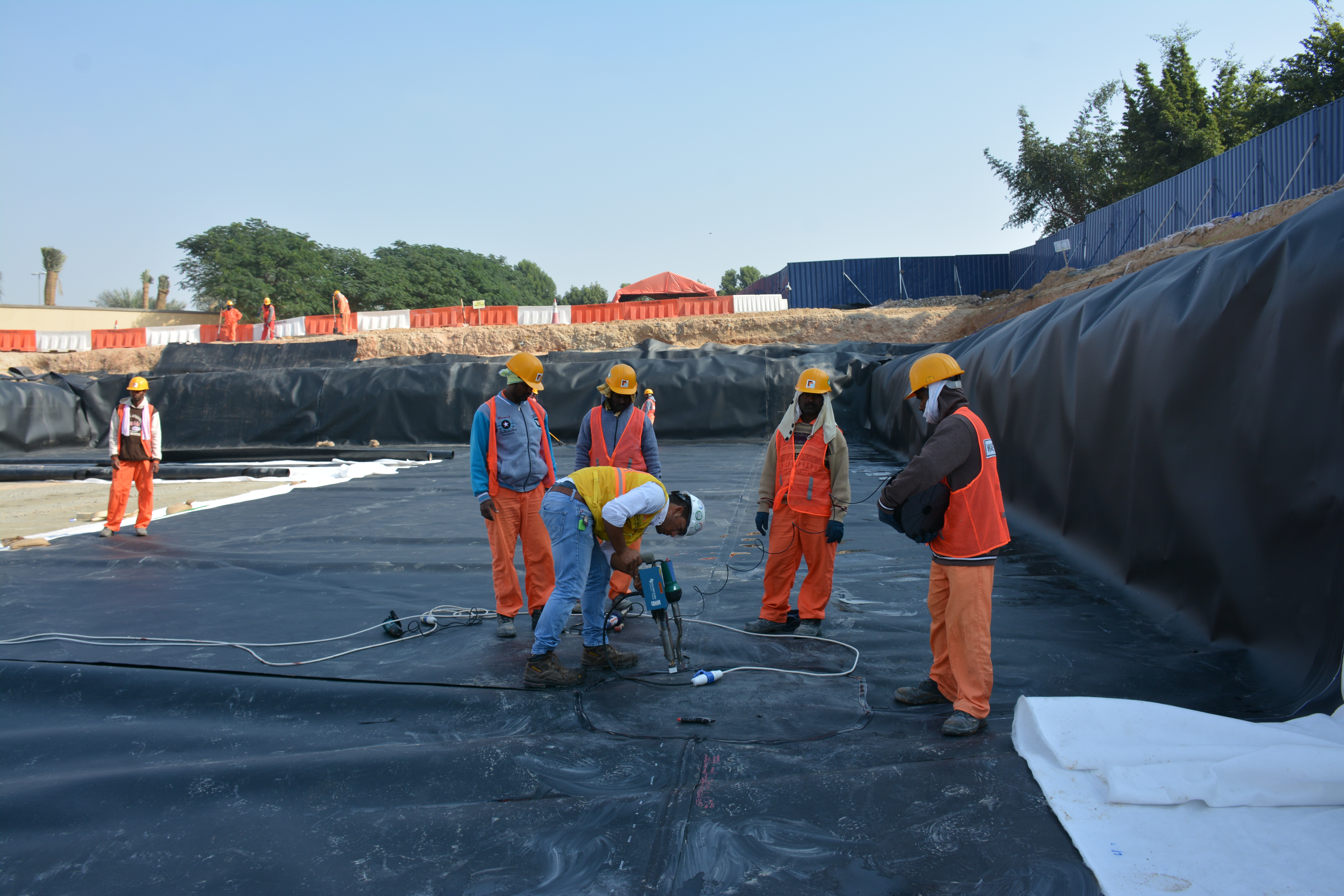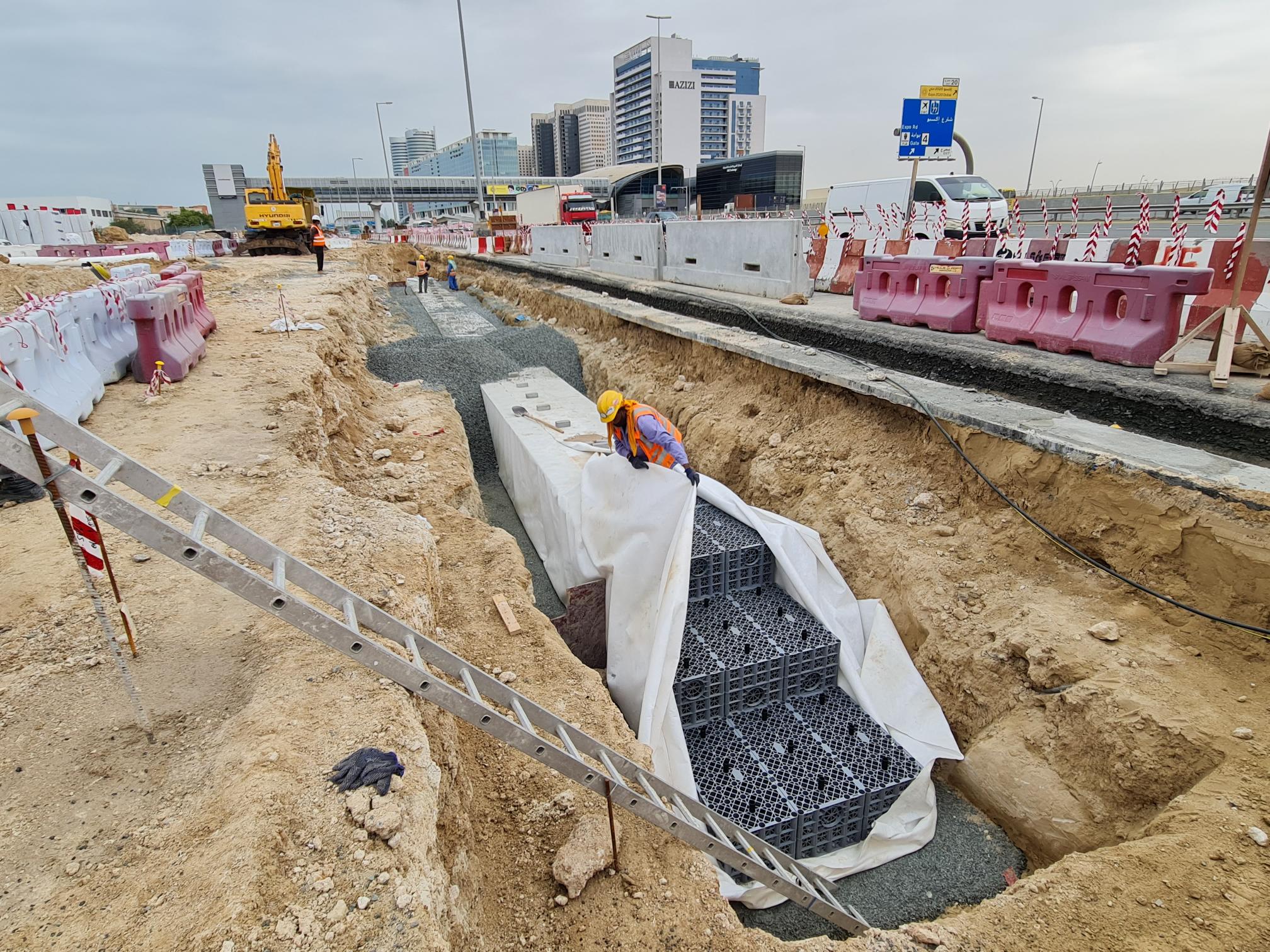Geomembrane
Geomembranes are impermeable liners used in water management systems to form watertight tanks for the retention of surface water and are especially be

The GCC has gained notoriety for its high standard of living, tax-free income, and safety, making it an attractive destination for expats from around the world. But with its rapidly expanding population, the pressure on its limited water resources has reached a critical point. Although technologies such as desalination and wastewater treatment have proven effective in generating potable water, they are highly energy-intensive, expensive, and environmentally taxing. It is therefore crucial that we shift our focus from meeting the mounting demand for water, to adopting strategies to reduce it.
What role can you play in this? By choosing the appropriate water management solution for your project, such as a soakaway or attenuation solution, you can not only reap cost-saving benefits, but also support the Middle East's broader objective of reducing its water and energy consumption.
At Polypipe Middle East, we are leading experts in water conservation, as evidenced by our award-winning water management systems, Polystorm and Permavoid. These systems can be utilised to capture and store water for reuse through attenuation or to recharge groundwater reserves using an innovative soakaway approach.
The individual Polystorm or Permavoid cells can be interlinked to construct larger modular structures that act as tanks for storing water temporarily, or for longer periods of time. The application of these systems varies depending on the type of material used to line the tank, which can either be a geomembrane or a geotextile.

Workers assemble a Polystorm tank out of modular cells, on top of a permeable geotextile.
Enabling attenuation through geomembranes:
A geomembrane is an impermeable material wrapped around the tank to create a watertight seal, allowing for the storage of rainwater and greywater through attenuation.
The water enters the Polystorm or Permavoid tank through an access point that is connected to rainwater outlets and drainpipes. Once inside, the geomembrane prevents any leakage, so that the water can be extracted in a controlled manner as required and used for various applications, such as irrigation, industrial processes, and even some domestic purposes.

Workers line the space with the geomembrane before installing the Polystorm tank at Remraam in Dubai.
Benefits of geomembranes:
Leverage a cost-free water source suitable for use in agricultural, industrial and some domestic applications.
The robust and heavy-duty material is resistant to punctures and provides long-lasting durability.
Resistant to fertilisers, pesticides, and other hazardous chemicals that would otherwise cause the material to degrade over time.
The malleable and flexible membrane is suitable for uneven or irregular surfaces.
Prefabricated in a factory to allow for efficient on-site installation, reducing time and labour costs.
Helps to minimise the risk of sub-grade softening by preventing water from seeping into the ground and saturating the soil.
Attenuation solutions are a cost-effective and zero-energy method of reducing the demand for desalination and groundwater extraction by capturing water that would otherwise go to waste.
Enabling soakaway through geotextiles:
Geotextiles are the complete opposite of geomembranes. While geomembranes serve to prevent water seepage, geotextiles promote quick and efficient drainage into the soil, making them highly beneficial in soakaway applications.
Geotextiles play an important role in the treatment aspect of water management systems. By filtering out solid particles and various pollutants, they are particularly useful in projects located near sensitive aquifers or source protection zones. At Polypipe Middle East, our experienced technical team works closely with our customers to recommend a tailored approach that best suits their unique project requirements.
The dimpled geotextile material is composed of a blend of hydrophilic (water-attracting and oil-repellent) and hydrophobic (oil-attracting and water-repellent) fibres. Its unique composition enables the membrane to effectively retain up to 6 litres of oil per 10 square metres, whether it be from car drips or catastrophic spillages.
The entrapped hydrocarbons are then biodegraded by naturally occurring microorganisms. The resulting self-cleaning mechanism requires no maintenance, providing a hassle-free, zero-energy, and cost-effective approach to localised water treatment.

Worker wraps geotextile around Polystorm tank to enable soakaway at the UAE Exchange Metro Station in Dubai.
Benefits of geotextiles:
High water permeability reduces the volume of water on the ground surface, preventing soil erosion.
Resistant to fertilisers, pesticides, and other hazardous chemicals that would otherwise cause the material to degrade over time.
By separating soil biota and pollutants from the water source, geotextiles prevent groundwater contamination.
The malleable and flexible membrane is suitable for uneven or irregular surfaces.
Self-cleaning technology achieved through the natural biodegradation of hydrocarbons by microorganisms.
Engineered to withstand 100 years of use, without any need for maintenance.
The UAE is currently facing a looming water crisis as it continues to deplete its groundwater reserves at an alarming rate, far exceeding the rate at which they can be replenished. In light of this, geotextiles can be used to remove all contaminants from the water before it is released to recharge underground aquifers. Through this process, we can ensure that pollutants will not contaminate the entire reserve.
Enabling irrigation through Geotextiles:
Geotextiles are compatible with both Polystorm and Permavoid systems for soakaway applications. However, when used in conjunction with Permavoid, they can serve an additional purpose: contributing towards the circular economy of water.
With a 93% void ratio, Permavoid cells can store a substantial amount of rainwater, greywater, or even AC condensate within the system. This water can be utilised for sub-surface irrigation of vegetation through an innovative mechanism, wherein the absorbent capillary cones transport the water up through the cell via capillary action.
Operating on a demand-only basis, the capillary cones extract water from the cell as necessary to sustain soil moisture levels between 15% and 45%. The water then moves through the geotextile via the process of wicking, allowing it to spread evenly across a large surface area. The innovative design eliminates the need for energy-intensive pumping or conveyance and significantly reduces water loss due to surface evapotranspiration - an issue commonly encountered with traditional above-soil irrigation methods.
You can view our case study on how Permavoid served as a sustainable and self-irrigating solution for Expo 2020 Dubai's movable tree planters by clicking here.
As irrigation accounts for 70% of the UAE's water supply, adopting a more efficient approach that incorporates the reuse of wastewater can significantly reduce the country's annual expenditure of $2.1 billion on desalination.
Summary:
Our extensive water management solutions portfolio provides a number of solutions for your project's specific needs. Simply contact our technical team, who are here to assist you in achieving your objectives.
Tel: +971 (0) 4 518 3000
Email: middleeast@polypipe.com
Geomembranes are impermeable liners used in water management systems to form watertight tanks for the retention of surface water and are especially be
Geotextile can be used to wrap geocellular tanks or to line aggregate layers and can significantly enhance the water treatment aspect of the water man
Polystorm is an efficient and versatile geocellular water management system for Sustainable urban Drainage Systems (SuDS) compliant attenuation, det
Permavoid is a shallow geocellular water management system aimed at managing stormwater and surface water at source, as close to where it falls as pos